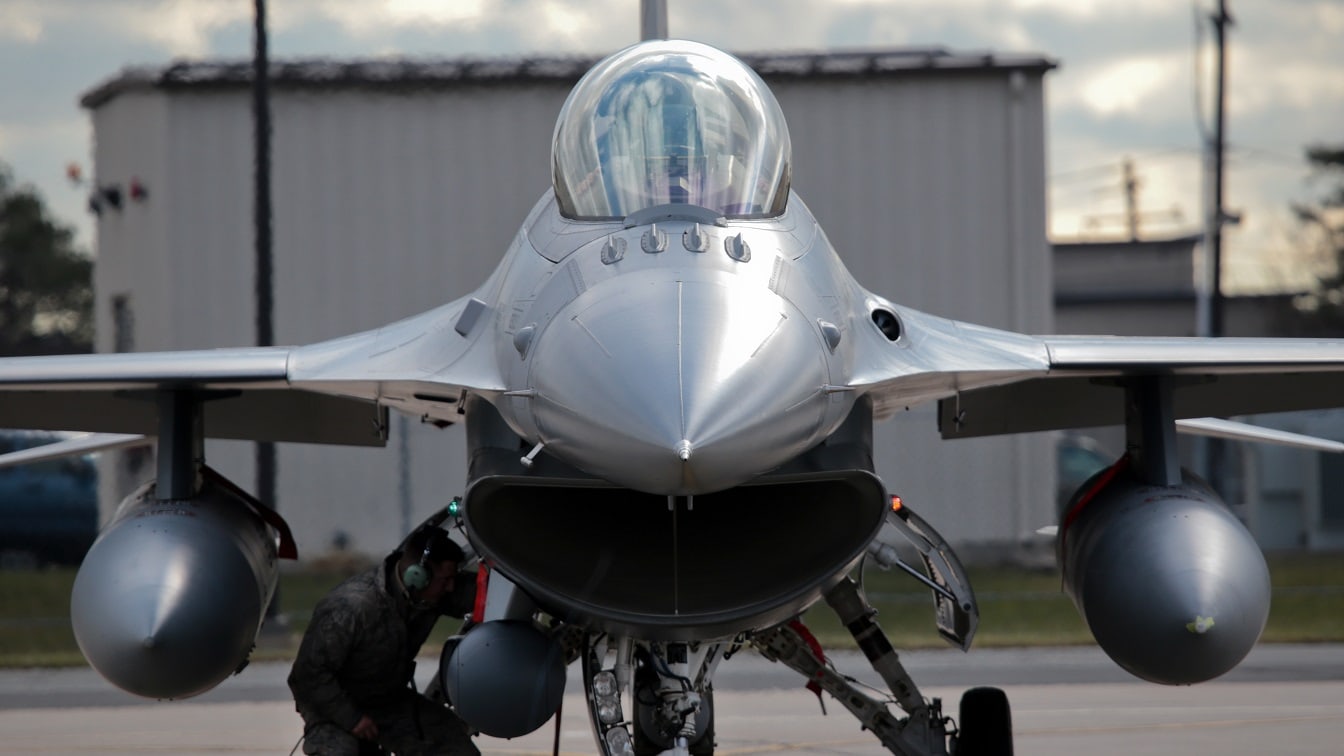It was reported this week that Ukrainian pilots could begin training to fly the F-16 Fighting Falcon as early as this summer. This would be the first step towards supplying Kyiv with the aircraft.
NATO members Denmark and the Netherlands are leading an international coalition to train the pilots and support staff, to maintain the aircraft, and ultimately supply a number of F-16s to Ukraine, Reuters first reported on Monday. Previously, the Dutch government had only said that it intended to begin training Ukrainian pilots “as soon as possible,” but it was unclear when the training could actually begin.
“This summer is our ambition. And we’ll see if that’s realistic” for the start of the training program, Dutch Defense Minister Kajsa Ollongren told Reuters in an interview.
The Canadian government has also pledged to provide support for Ukraine, which could include training for F-16 pilots, as well as missiles and other ordnance that could equip the Fighting Falcon.
NATO Embraces the F-16
Even as a number of NATO member nations have adopted the F-35 Lightning II, other nations are still employing the F-16 Fighting Falcon. Just this week, Norway formally sold 32 surplus F-16A/B combat aircraft to Romania after securing approval from the United States. The aircraft will be serviced before being delivered to Bucharest.
Romania signed a contract with Norway in November to buy the “pre-owned” F-16s for 388 million euros (approximately $418 million). The last of the F-16s in Norwegian service were retired last year.
“The sale will strengthen and modernize the defense of an allied nation that has Ukraine as a neighbor,” said Norwegian Defense Minister Bjorn Arild Gram, per the Defense Post.
Romania had also acquired 17 used fighters from Portugal, and it is an effort for the Eastern European nation to modernize its air force and replace its antiquated Soviet-era MiG-21 fighters. Meanwhile, Norway will upgrade its own air force, as Olso plans to acquire an additional 52 Lockheed Marin F-35 Lightning IIs.
The Fighting Falcon Can Still Put Up a Fight
Ukraine has increasingly called for the F-16 to aid its war effort, and while the Fighting Falcon first entered service nearly five decades ago, it is still a very capable warbird.
Though initially designed as an air superiority fighter, the Fighting Falcon quickly evolved into a successful all-weather multirole combat aircraft that has seen service around the world. Since entering service in 1979, this “warbird” has been battle-tested, engaging in more than 400,000 combat sorties and has a combined 19 million flight hours.
During Operation Desert Storm, the F-16 flew more sorties than any other aircraft, and it was used to attack airfields, military production facilities, Scud missile sites, and a variety of other targets. The F-16 further served as a major component of the combat forces committed to the Global War on Terror (GWoT) flying thousands of sorties in support of operations Noble Eagle (Homeland Defense), Enduring Freedom in Afghanistan, and Iraqi Freedom.
There are approximately 3,000 operational F-16s in service today in 25 countries, a testament to what is easily the world’s most successful, combat-proven multi-role jet fighter ever produced.
Comparing the F-16 to the MiG-29
The fast and agile F-16 Fighting Falcon isn’t just one of the top fighters it is also among the most cost-effective.
In fact, this week a pilot with the Polish Air Force told Newsweek that the U.S.-made F-16 is in a “different league” from the Soviet-era MiG-29 that Ukraine is now operating. He described the F-16 as being designed to perform efficiently in a modern conflict, while the MiG-29 is a “ghost” from a previous era.
“I wouldn’t like to fly that jet (the MiG-29) in real combat,” said the unnamed pilot, who flew the MiG-29 for five years before flying the F-16 for another five. He further added, “I could just talk all day about [the] advantages of F-16 over MiG-29, but I think it’s not fair because those are two different leagues nowadays.”
Among the notable differences cited was the poorer visibility of the MiG-29, compared to the F-16, which offers a bubble canopy that provides the pilot with a 360-degree view. Moreover, the F-16 can track and engage multiple targets, and it has better overall situational awareness. By contrast, the MiGs require input from ground controllers to find an adversary – and its radar was also only able to track one target after locking on to it.
The Polish pilot further suggested the F-16 has proven to be a multirole jet that can operate in all weather conditions, whereas the MiG-29 is a true fighter with very limited air-to-ground capabilities.
It is easy to see why Kyiv wants the Fighting Falcon. This warbird could help Ukraine gain control of the skies.
Author Experience and Expertise
A Senior Editor for 19FortyFive, Peter Suciu is a Michigan-based writer. He has contributed to more than four dozen magazines, newspapers, and websites with over 3,200 published pieces over a twenty-year career in journalism. He regularly writes about military hardware, firearms history, cybersecurity, politics, and international affairs. Peter is also a Contributing Writer for Forbes and Clearance Jobs. You can follow him on Twitter: @PeterSuciu.

